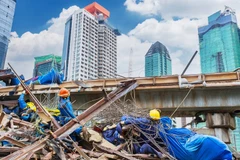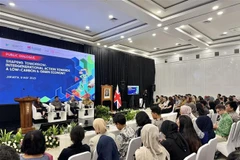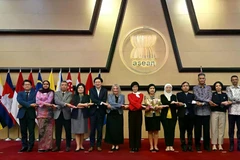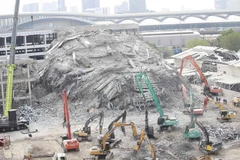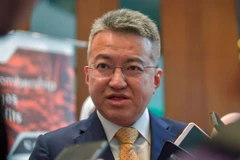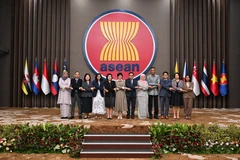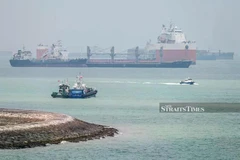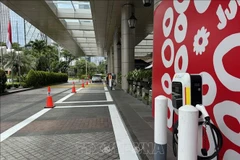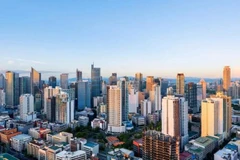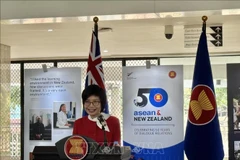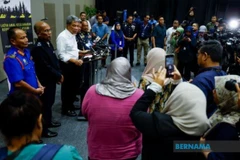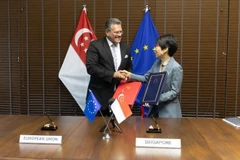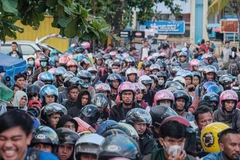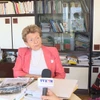 Thick haze shrouds parts of Bangkok where levels of ultra-fine PM2.5 dust soared beyond the acceptable limit on September 30. (Source: bangkokpost.com)
Thick haze shrouds parts of Bangkok where levels of ultra-fine PM2.5 dust soared beyond the acceptable limit on September 30. (Source: bangkokpost.com) Bangkok (VNA) – Thai Prime Minister PrayutChan-o-cha on September 30 held an urgent video-conference with leaders of 16 provincesand related ministries after PM2.5 air pollution exceeded the safe level inBangkok and surrounding provinces.
Also present were Deputy PM and Public Health Minister Anutin Charnvirakul,Interior Minister Anupong Paojinda, Transport Minister Saksayam Chidchob, andthe head of the Pollution Control Department (PCD).
The urgent meeting was called after fine PM 2.5 dust haze returned to blanketthe capital and its vicinity.
Most PCD air-monitoring stations on September 30 showed PM2.5 levels exceedingthe 50 microgram per cu.m reference point deemed a health hazard for vulnerablegroups. As of 5pm, the highest PM2.5 level was recorded on Kanchanaphisek Roadin Bang Khunthian district, with 80 microgram per cu.m.
At that time, Bangkok had the world's worst air quality among major cities,according to data from IQAir AirVisual.
Sukhum Kanchanapimai, Public Health Permanent Secretary,urged people who worked outdoors to wear face masks and drink 6-8 glasses ofwater a day as PM2.5 levels rose above the safe threshold of 50 microgrammesper cubic metre.
Water-spraying operations began in Laksi district and other parts ofBangkok in a bid to reduce PM2.5 levels around schools and major routes.
Pralong Damrongthai, Director-General of the Pollution Control Department(PCD), blamed the pollution on air stagnation and lower rainfall during theseasonal transition.
Bangkok residents can expect a brief respite on October 1 as drizzle, forecastto douse the capital./.



